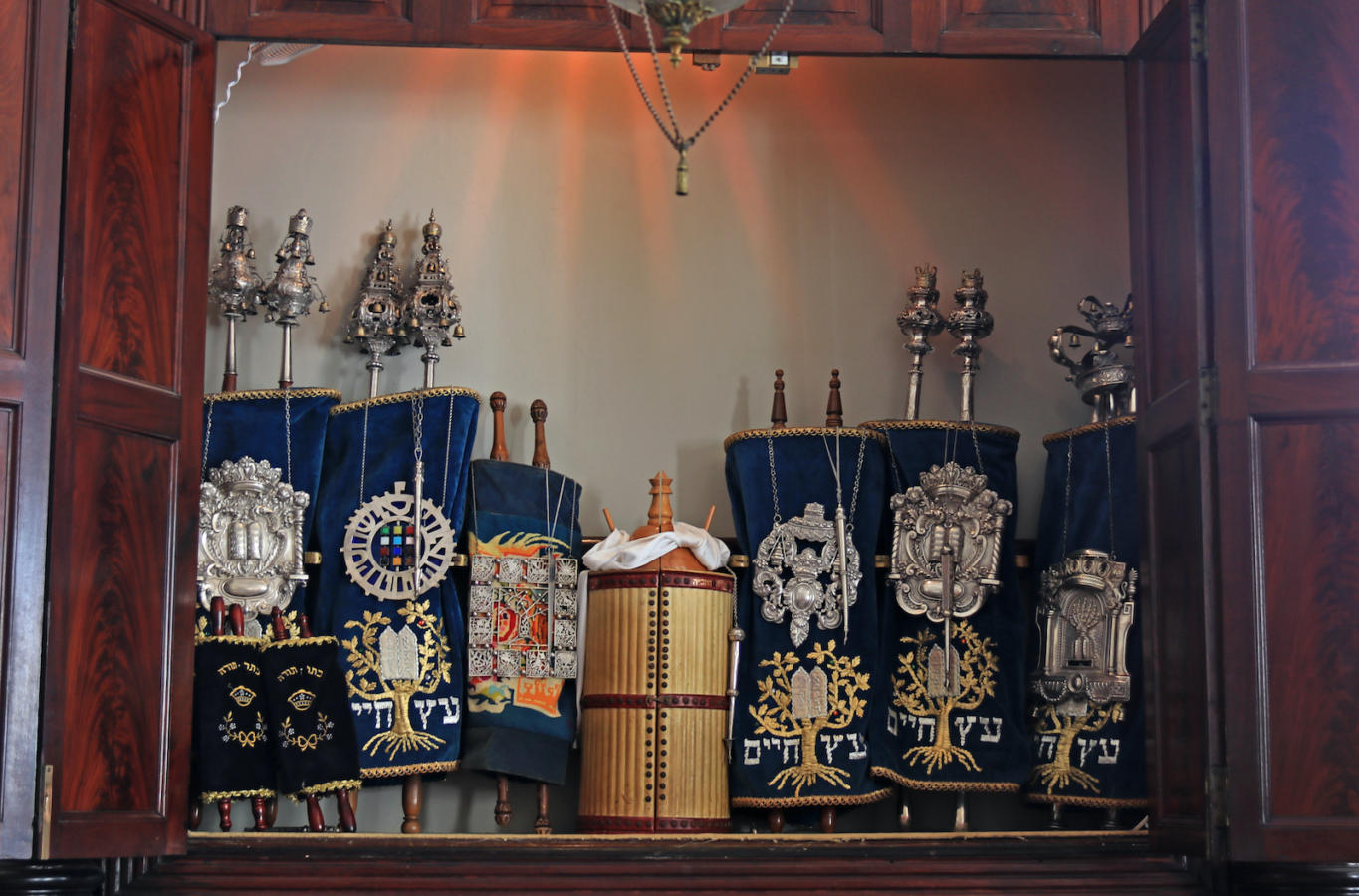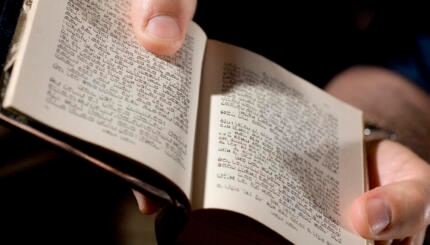Vayehi Binso’a Ha’aron is a prayer chanted at the start of the Torah service. As the ark that contains the scroll is opened, the congregation stands and recites these words:
ויהי בנסע הארן ויאמר משה קומה יהוה ויפצו איביך וינסו משנאיך מפניך
כי מציון תצא תורה ודבר יהוה מירושלים
ברוך שנתן תורה לעמו ישראל בקדושתוWhen the Ark was to set out, Moses would say: Advance, O Lord! May Your enemies be scattered, and may Your foes flee before you! Numbers 10:35
For Torah shall come forth from Zion, The word of the Lord from Jerusalem.” Isaiah 2:3
The prayer is composed of two verses — one from Numbers and one from Isaiah — that jointly convey two important aspects of the Torah.
The word ha’aron means “the ark” (and in modern Hebrew, “the closet”), and it refers in this context to the Ark of the Covenant, the container that carried the tablets of the Ten Commandments as the Israelites wandered for 40 years in the desert before entering the land of Israel. The ark in contemporary synagogues that holds the Torah scrolls is a kind of reconstruction of this original Ark. The verse in Numbers refers to the moving of the Ark as the Israelites moved from camp to camp, with the Ark leading the way. But it may have been selected for this prayer for another reason as well.
In the Torah, this verse quite literally stands out. It is framed at beginning and end by the Hebrew letter nun, rendered backwards or upside down. In Hebrew, this is known as a nun hafucha, literally a “flipped nun.” These nuns do not function as letters, but as symbols. The rabbis of the Talmud and the later medieval commentators had various ideas as to what these symbols signified.
With your help, My Jewish Learning can provide endless opportunities for learning, connection and discovery.
One suggestion is that the verse is marked in this way because it’s in the wrong place. The nuns are meant to indicate that verse should be placed elsewhere in the text in future rewrites. Another suggestion is that the symbols function as bookends, indicating that the verse should actually stand alone as an entire book of Torah. Because the verse is in the middle of Numbers, this would split Numbers up into three books, making a total of seven books of the Torah instead of five. The rabbis derive this radical idea not from the content of the verses, but from the symbols, which do not appear anywhere else in the Torah.
While the verse from Numbers recalls the time when the Torah was first given to the Jewish people, the second verse, from Isaiah, is notably in the future tense. In the Bible, the verses comes in the midst of a prophecy of a time when all the peoples of the earth will recognize God’s sovereignty, when swords will be beat into plowshares and peace will reign. It speaks of a world that has yet to come, of a Torah that will yet emerge.
Taken together, these verses represent two aspects of Torah. The first reflects how Torah functioned as a guide for the newly free Israelites, accompanying them as they physically transitioned from camp to camp in the wilderness and as they emerged into peoplehood. The second reflects the idea that Torah was not only revealed at a singular moment in time, but is part of an ongoing process of revelation. This idea is further reflected in the blessings we recite as the Torah is read, which bless God as the one who “gives Torah” — not (solely) in the past, but in the present as well.
Torah literally means “teaching” or “instruction” and, in the broadest sense, this teaching is always evolving. Just as the verse from Numbers is bracketed in the Torah scroll, Vayehi Binso’a Ha’aron brackets the Torah in time — as a teaching both rooted in the Jewish past but also evolving into the future. Vayehi Binso’a Ha’aron serves as a reminder that as we prepare to see the scroll and hear its ancient words, its application and understanding is always changing.



